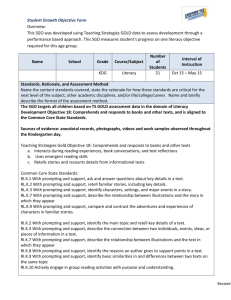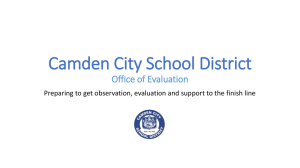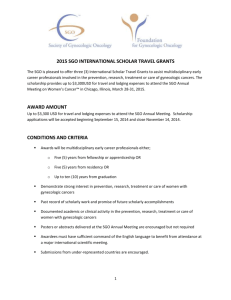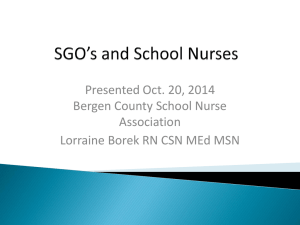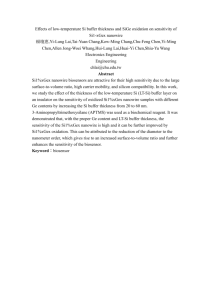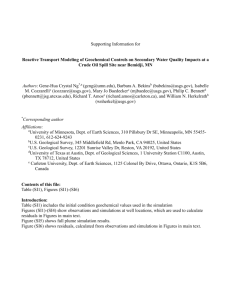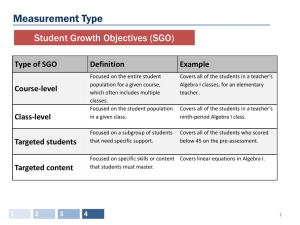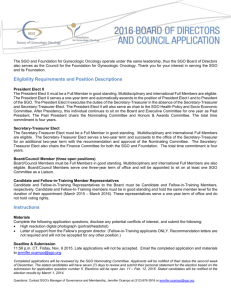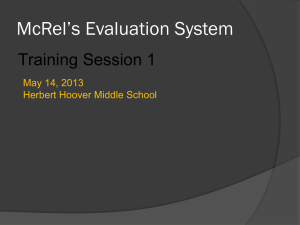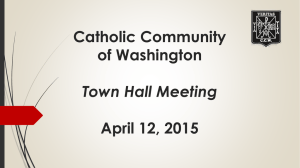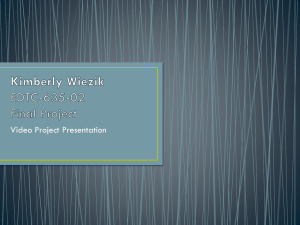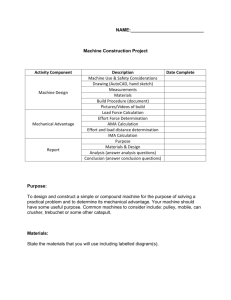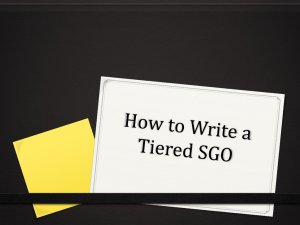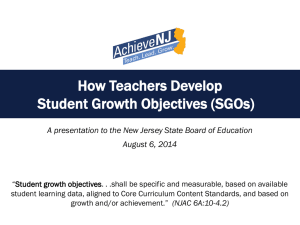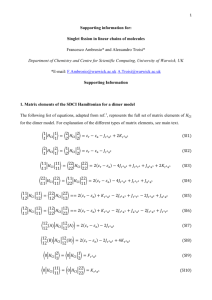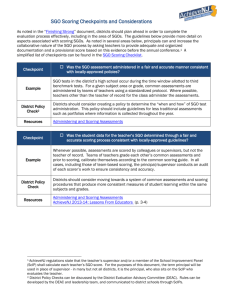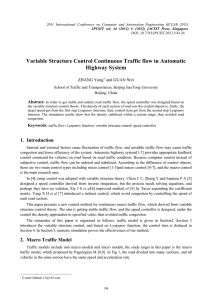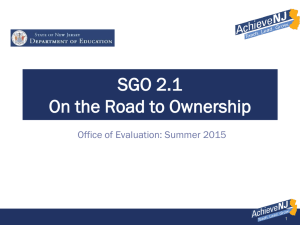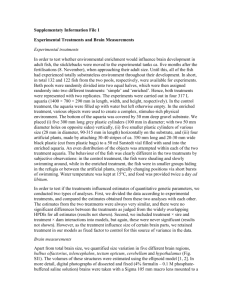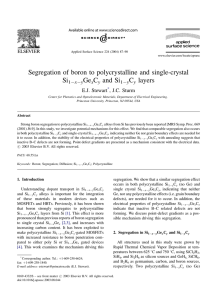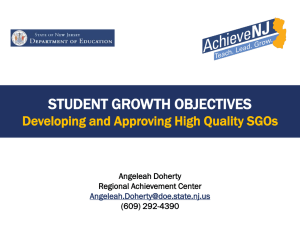Word
advertisement
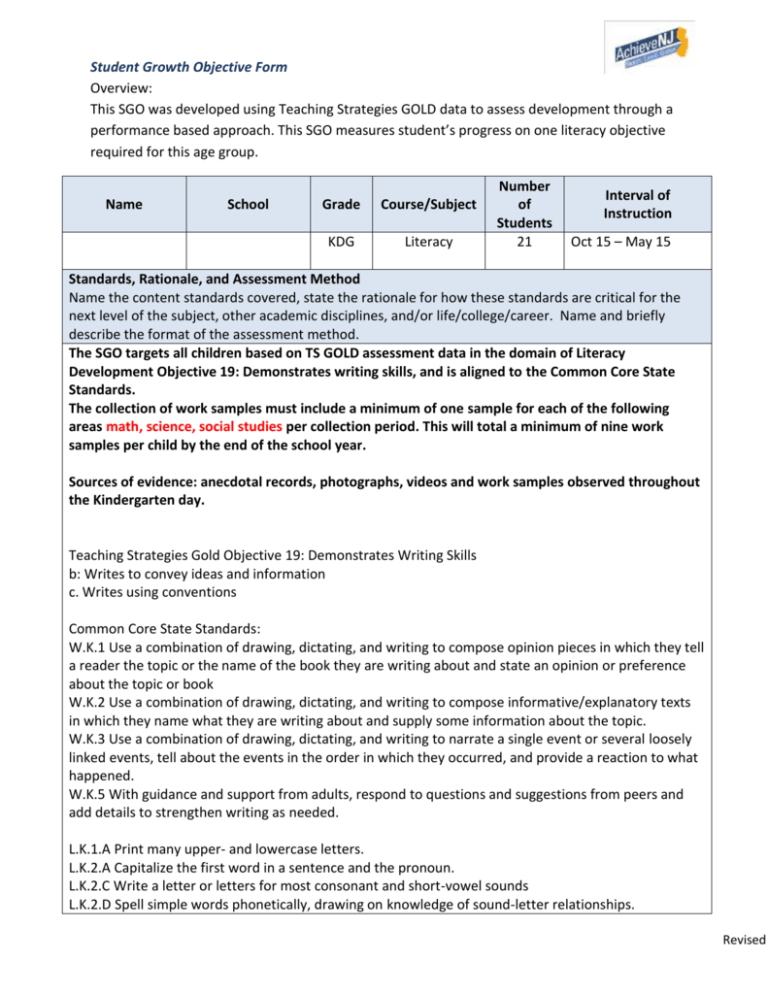
Student Growth Objective Form Overview: This SGO was developed using Teaching Strategies GOLD data to assess development through a performance based approach. This SGO measures student’s progress on one literacy objective required for this age group. Name School Grade Course/Subject KDG Literacy Number of Students 21 Interval of Instruction Oct 15 – May 15 Standards, Rationale, and Assessment Method Name the content standards covered, state the rationale for how these standards are critical for the next level of the subject, other academic disciplines, and/or life/college/career. Name and briefly describe the format of the assessment method. The SGO targets all children based on TS GOLD assessment data in the domain of Literacy Development Objective 19: Demonstrates writing skills, and is aligned to the Common Core State Standards. The collection of work samples must include a minimum of one sample for each of the following areas math, science, social studies per collection period. This will total a minimum of nine work samples per child by the end of the school year. Sources of evidence: anecdotal records, photographs, videos and work samples observed throughout the Kindergarten day. Teaching Strategies Gold Objective 19: Demonstrates Writing Skills b: Writes to convey ideas and information c. Writes using conventions Common Core State Standards: W.K.1 Use a combination of drawing, dictating, and writing to compose opinion pieces in which they tell a reader the topic or the name of the book they are writing about and state an opinion or preference about the topic or book W.K.2 Use a combination of drawing, dictating, and writing to compose informative/explanatory texts in which they name what they are writing about and supply some information about the topic. W.K.3 Use a combination of drawing, dictating, and writing to narrate a single event or several loosely linked events, tell about the events in the order in which they occurred, and provide a reaction to what happened. W.K.5 With guidance and support from adults, respond to questions and suggestions from peers and add details to strengthen writing as needed. L.K.1.A Print many upper- and lowercase letters. L.K.2.A Capitalize the first word in a sentence and the pronoun. L.K.2.C Write a letter or letters for most consonant and short-vowel sounds L.K.2.D Spell simple words phonetically, drawing on knowledge of sound-letter relationships. Revised Starting Points and Preparedness Groupings State the type of information being used to determine starting points and summarize scores for each type by group. Modify the table as needed. Authentic assessments (anecdotal notes, photographs, and work samples) from the first 6-8 weeks of school are uploaded onto the Teaching Strategies GOLD online assessment system. Documentation is leveled and students are placed into one of the following categories for each of the objectives/dimensions. Below Widely Held Expectations Meeting Widely Held Expectations Exceeding Widely Held Expectations Teachers take advantage of the information they gathers about students during the first few weeks of the school year to determine their starting points. The multiple notes, photographs, and work samples collected constitute valuable multiple measures of the students’ current levels in math. Student Growth Objective State simply what percentage of students in each preparedness group will meet what target in the space below, e.g. “80% of students in each group will meet the target score.” Describe how the targets reflect ambitious and achievable scores for these students. Use the table to provide more detail for each group. Modify the table as needed. At least 80% of students will advance two levels or more on the dimensions measured according to the Teaching Strategies GOLD assessment tool. Teachers chose to set targets for students based on expected growth from a well-defined starting point. This makes sense when using a sophisticated portfolio system that measures increases in a set of skills over time. The expectation is that all students will improve by a particular amount on a majority of the standards/objectives being taught. Scoring Plan State the projected scores for each group and what percentage/number of students will meet this target at each attainment level. Modify the table as needed. Teacher SGO Score Based on Percent of Students Achieving Target Preparedness Student Target Score Group Score Exceptional (4) Full (3) Partial (2) Insufficient (1) Increase at 90% 80% 70% 60% least 2 levels Each student has his or her own learning target and the teacher will receive a rating based on how many students meet their target. Because the teacher has 21 students, they may want to convert the % of students to numbers for ease of tracking and calculating a final score. Approval of Student Growth Objective Administrator approves scoring plan and assessment used to measure student learning. Teacher _________________ Evaluator ________________ Signature____________________ Date Submitted_______________ Signature Date Approved _______________ Revised ____________________ Results of Student Growth Objective Summarize results using weighted average as appropriate. Delete and add columns and rows as needed. Students at Target Score Teacher SGO Score Total Teacher SGO Score Notes Describe any changes made to SGO after initial approval, e.g. because of changes in student population, other unforeseen circumstances, etc. The scoring section of the form has been simplified to record success as measured by attainment of individual learning targets rather than by using a tiered approach. Review SGO at Annual Conference Describe successes and challenges, lessons learned from SGO about teaching and student learning, and steps to improve SGOs for next year. Teacher ____________________________ Date ___________________ Signature ______________________ Evaluator ____________________________ Date ___________________ Signature ______________________ Revised
